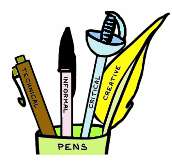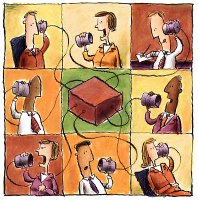 This web site was set up in 2005 to support workshops at the Institute of Education, London, for undergraduate students from National Kaohsiung Normal University, Taiwan. The workshops were entitled 'Approaches to the Teaching of Writing'.
This web site was set up in 2005 to support workshops at the Institute of Education, London, for undergraduate students from National Kaohsiung Normal University, Taiwan. The workshops were entitled 'Approaches to the Teaching of Writing'.
Introduction: about this site
 This web site was set up in 2005 to support workshops at the Institute of Education, London, for undergraduate students from National Kaohsiung Normal University, Taiwan. The workshops were entitled 'Approaches to the Teaching of Writing'.
This web site was set up in 2005 to support workshops at the Institute of Education, London, for undergraduate students from National Kaohsiung Normal University, Taiwan. The workshops were entitled 'Approaches to the Teaching of Writing'.
Talking about Writing...........
 Starting Points
Starting PointsTake a day in your life. For example, yesterday.
Think of all the things you did on that day which involved some kind of writing, in any language. Make a list and try to recall as much as you can of the situations in which you wrote.
What were you doing? Who were you writing to? Why were you writing?
The chances are that on that day you engaged in many different acts of writing. You may have written continuous prose in the form of an essay or a report. This is probably what most of us think of when the word 'writing' is mentioned.
But you may also have written in many other ways: letters, emails, a blog, an online discussion forum, text messages, instant messages (MSN etc), a shopping list, a postcard (if you are on holiday). Even a diary, poetry, or (you never know) your life story.
 Writing Situations
Writing SituationsWhen you look closely at your everyday life you will probably find a lot of writing going on, often in connection with other technologies. Each act of writing will be slightly different - according to the situation you are in.
One way in which we can define writing situations is to consider the audience, content and purpose:
The writing situation depends on:
* the people you are communicating with (AUDIENCE)
* the topics you are writing about (CONTENT)
* the reasons why you are writing (PURPOSE)
When teaching 'writing' to children we need to bear in mind this diversity of situations. Written language is not just a feature of literacy in school. It is also a feature of social communication and personal lives.
As we saw in the first workshop, writing can be used for many purposes:
* to communicate a message
* to start or build (or even repair!) a relationship
* to persuade and promote
* to record
* to express ideas
* to work out our own thoughts
* to present ourselves to others
* to display knowledge
* to pass exams
Writing: Skill or Practice?
The chances are that even young primary-age children will use writing in some way outside school, often in connection with drawing, and of course see others writing all around them. Many children will have experience of writing text messages and emails before they learn formal writing at school. In these situations they are learning a skill, but also taking part in a social practice.
When teaching writing we must bear in mind that we are not just teaching a formal skill based on grammar. Writing is a formal skill and it does involve grammar; but it is also a set of practices.
Does the skill come first, and the practice later? Or are skill and practice always combined?
Audience and Purpose
It is useful to think of writing as a resource for communication in situations, therefore involving both skill and practice. The audience, content and purpose are not clear in all situations. In school, for example, children usually have to write for their teacher as the main audience. But they may also have to write for an unknown audience, such as an examiner.
The purpose of writing may change in subtle ways. When writing for a teacher children may see the purpose of their writing as communication or as a way of getting feedback. In a test or exam the situation changes. Their writing becomes a kind of display of ability or evidence, and not real communication. Children who do well in exams are often the ones who understand this changed situation. They recognise that the test is not the same practice of writing as, say, writing to their teacher or a friend.
 Some Vocabulary for Discussing 'Writing'
Some Vocabulary for Discussing 'Writing'Here are fourteen terms we used in the first workshop to discuss writing. Which of these terms would you use to describe what you were doing on your typical day? What other terms also come to mind?
Writer, Text, Situation, Genre/Text Type
Language, Community, Skill,
Style, Voice, Creativity, Topic,
Audience, Power, Communication
Approaches to teaching writing will find a place for all or most of these words, but the ways in which they are related will differ. Most approaches, for example, will give the writer and the writer's creativity a high value. But they will differ about how the writer's creativity is related to genre or to skill. Similarly, different pedagogical (= teaching) approaches will define these key words - especially words like power and style - in different ways.
Images of Writing
In the workshop we looked at some metaphors and images to answer the question: What is Writing? Here are some examples.
Writing is....

a way of thinking
 a unique talent
a unique talenta sign of knowledge
an escape
a commodity
Can you think of more images of writing?
Four Approaches to the Teaching of Writing
This is a summary of approaches to writing pedagogy which are widely practised in Anglo-American and some European contexts. A single teacher might make use of more than one approach, and different approaches might suit different groups of learners.
- writing seen as a cognitive and procedural skill
- strong emphasis on grammar, text structure and spelling
- high value placed on correctness and formal language
- relatively small range of genres used and practised
- lots of practical and hands-on activities with written language
- use of exemplary models to illustrate good writing
- use of exercises to build up competence through repetition and imitation
- provision of vocabulary and writing prompts
- learner is skill ‘apprentice’ before he/she can use language
creatively
- focuses on the language needed to succeed in school, so little recognition of the social languages of learners’ backgrounds
Rhetorical Approaches
- based on genres, argument or types of academic writing
- writing seen as social practice in rhetorical situations
- strong emphasis on rhetorical moves and techniques, on conventional ways of organizing texts, and on useful vocabulary and sentence patterns
- high value placed on effective communication
- wide range of genres used, but may depend on the level of instruction
- strong emphasis on situation, purpose and audience
- uses samples rather than single models and encourages students to read for
language features which they can use in their own work
- uses some exercises, but mostly real-life texts and multiple drafts
- emphasis on imitation leading to independent activity
- learner is a rhetorical agent learning to use language in new situations
- focuses on target language, but varies widely on whether
learners’ own background languages are recognised
Critical/Cultural Approaches
- often strongly related to study of literature or media texts
- writing seen as interpretative or aesthetic activity
- strong emphasis on making links between reading and writing
- high value placed on thematic considerations and arguments
- tends to be a limited range of genres traditionally suited to critical interpretation such as essays, but can also be portfolios
- tends to focus more on the meaning of a text rather than writing processes
- learner is an interpreter and critic, especially concerned with issues of power, but also is expected to give evidence
- places a high value on classroom discussions, during which students’ own background experiences can be highly valued, but these are often less apparent in student writing
- strong emphasis on aesthetic and/or political education through texts
Expressive Approaches
- also often called ‘experiential’ or ‘first person’ approaches
- writing seen as an expressive resource, especially for personal growth
- strong emphasis on experience, imagination and creativity
- high value placed on ‘creative writing’ such as poetry and narrative
- often uses visual material such as photographs and paintings
- can be a wide range of genres, but generally there is less emphasis on rhetorical and informational writing
- little use of exercises but strong use of literary examples for inspiration
- learner is an enquirer and researcher
- places high value on group work, multiple drafts and peer ‘conferencing’
- teacher will respond to meaning before correctness and is strongly involved in the initial invention of ideas for students to work on
- students’ own background languages and experiences are often highly valued and encouraged in written work
Summary:
Pragmatic Approaches: skills
Rhetorical Approaches: genres/argumentation/academic discourse
Critical/Cultural Approaches: reading and interpretation
Expressive Approaches: experience and creativity
- writing seen as a cognitive and procedural skill
- strong emphasis on grammar, text structure and spelling
- high value placed on correctness and formal language
- relatively small range of genres used and practised
- lots of practical and hands-on activities with written language
- use of exemplary models to illustrate good writing
- use of exercises to build up competence through repetition and imitation
- provision of vocabulary and writing prompts
- learner is skill ‘apprentice’ before he/she can use language
creatively
- focuses on the language needed to succeed in school, so little recognition of the social languages of learners’ backgrounds
Rhetorical Approaches
- based on genres, argument or types of academic writing
- writing seen as social practice in rhetorical situations
- strong emphasis on rhetorical moves and techniques, on conventional ways of organizing texts, and on useful vocabulary and sentence patterns
- high value placed on effective communication
- wide range of genres used, but may depend on the level of instruction
- strong emphasis on situation, purpose and audience
- uses samples rather than single models and encourages students to read for
language features which they can use in their own work
- uses some exercises, but mostly real-life texts and multiple drafts
- emphasis on imitation leading to independent activity
- learner is a rhetorical agent learning to use language in new situations
- focuses on target language, but varies widely on whether
learners’ own background languages are recognised
Critical/Cultural Approaches
- often strongly related to study of literature or media texts
- writing seen as interpretative or aesthetic activity
- strong emphasis on making links between reading and writing
- high value placed on thematic considerations and arguments
- tends to be a limited range of genres traditionally suited to critical interpretation such as essays, but can also be portfolios
- tends to focus more on the meaning of a text rather than writing processes
- learner is an interpreter and critic, especially concerned with issues of power, but also is expected to give evidence
- places a high value on classroom discussions, during which students’ own background experiences can be highly valued, but these are often less apparent in student writing
- strong emphasis on aesthetic and/or political education through texts
Expressive Approaches
- also often called ‘experiential’ or ‘first person’ approaches
- writing seen as an expressive resource, especially for personal growth
- strong emphasis on experience, imagination and creativity
- high value placed on ‘creative writing’ such as poetry and narrative
- often uses visual material such as photographs and paintings
- can be a wide range of genres, but generally there is less emphasis on rhetorical and informational writing
- little use of exercises but strong use of literary examples for inspiration
- learner is an enquirer and researcher
- places high value on group work, multiple drafts and peer ‘conferencing’
- teacher will respond to meaning before correctness and is strongly involved in the initial invention of ideas for students to work on
- students’ own background languages and experiences are often highly valued and encouraged in written work
Scenarios for Teaching Writing
In the following situations people are learning how to write. However, in each case the situation is very different.
For each scenario 1 – 4, note:
What are learners doing?
What is the teacher doing?
What resources are being used?
How do these scenarios relate to the approaches to writing outlined above?
1. Four ten-year-old children are sitting round a table. They are writing a story called ‘The Incident’. Their teacher has read them a story with that name and asked them to write their own story using some event from their own lives. There was a classroom discussion after the story reading in which children shared their own ideas for stories and some useful words were put on the board by the teacher. The four children are talking while they write individually. The teacher moves round from one table to another, making suggestions and responding to what children have written so far. The teacher tells the children many times, ‘This is your first draft, so just get your ideas down on paper’.
2. A seventeen-year-old student is reading a paper to a class on the theme of ‘Greed’ in the plays of Arthur Miller. The paper is based on the kind of question the student is likely to get in her examination. It asks for her ‘critical opinions’ but also asks her to give ‘evidence’ from the text she is studying. At the end of the paper students comment on the ideas in the paper and ask questions. The teacher gives her response to the paper, suggesting that the student should re-arrange the sections to improve the structure of her argument and also give more textual evidence. When all students in the class have given papers, the teacher issues a handout giving some tips on how to write essays. One of the ‘outstanding’ student essays is published on the class website with the teacher’s commentary. The students continue to discuss the play on an internet discussion board moderated by the teacher.
3. A class of thirteen-year-old children in a chemistry classroom are studying three texts. The texts are all examples of laboratory reports. The class has just finished an experiment and now the students have to write a report on what they did and observed. Very few students have done a lab report before. The teacher reads the three texts with the class and then asks them to look for similarities in how the three texts have been organized. Working in groups, the children underline words and phrases and make notes. After this, the teacher shows on an electronic white board some of the key phrases and structures of a typical lab report. Then the students and the teacher together write a lab report of the experiment they have done. The students call out suggested ways of writing which the teacher writes down on the board, making changes and editing wherever necessary. At the end all the students receive a copy of the report. They are asked to keep it and use it to help them write future lab reports.
4. A group of people working for an international organization are in a classroom. They all have a laptop which is connected to a central computer used by the workshop leader. They are all learning how to use a new memo format which has been introduced by the organization in order to standardize and formalize its inter-office communication. The class study a single example to see how the new memo format is organized. They are given a checklist of ‘things to remember’ by the trainer and then are led through an exercise where they have to write their own memo using the structure given. Each student is given an electronic template by the trainer to write his/her memo. After the exercise there is an evaluation in which students’ own texts are compared.
Reflect on your education so far. How did you learn to write? What practical activities can you remember doing which were designed to help you write better in school and university? Were they effective?
For each scenario 1 – 4, note:
What are learners doing?
What is the teacher doing?
What resources are being used?
How do these scenarios relate to the approaches to writing outlined above?
1. Four ten-year-old children are sitting round a table. They are writing a story called ‘The Incident’. Their teacher has read them a story with that name and asked them to write their own story using some event from their own lives. There was a classroom discussion after the story reading in which children shared their own ideas for stories and some useful words were put on the board by the teacher. The four children are talking while they write individually. The teacher moves round from one table to another, making suggestions and responding to what children have written so far. The teacher tells the children many times, ‘This is your first draft, so just get your ideas down on paper’.
2. A seventeen-year-old student is reading a paper to a class on the theme of ‘Greed’ in the plays of Arthur Miller. The paper is based on the kind of question the student is likely to get in her examination. It asks for her ‘critical opinions’ but also asks her to give ‘evidence’ from the text she is studying. At the end of the paper students comment on the ideas in the paper and ask questions. The teacher gives her response to the paper, suggesting that the student should re-arrange the sections to improve the structure of her argument and also give more textual evidence. When all students in the class have given papers, the teacher issues a handout giving some tips on how to write essays. One of the ‘outstanding’ student essays is published on the class website with the teacher’s commentary. The students continue to discuss the play on an internet discussion board moderated by the teacher.
3. A class of thirteen-year-old children in a chemistry classroom are studying three texts. The texts are all examples of laboratory reports. The class has just finished an experiment and now the students have to write a report on what they did and observed. Very few students have done a lab report before. The teacher reads the three texts with the class and then asks them to look for similarities in how the three texts have been organized. Working in groups, the children underline words and phrases and make notes. After this, the teacher shows on an electronic white board some of the key phrases and structures of a typical lab report. Then the students and the teacher together write a lab report of the experiment they have done. The students call out suggested ways of writing which the teacher writes down on the board, making changes and editing wherever necessary. At the end all the students receive a copy of the report. They are asked to keep it and use it to help them write future lab reports.
4. A group of people working for an international organization are in a classroom. They all have a laptop which is connected to a central computer used by the workshop leader. They are all learning how to use a new memo format which has been introduced by the organization in order to standardize and formalize its inter-office communication. The class study a single example to see how the new memo format is organized. They are given a checklist of ‘things to remember’ by the trainer and then are led through an exercise where they have to write their own memo using the structure given. Each student is given an electronic template by the trainer to write his/her memo. After the exercise there is an evaluation in which students’ own texts are compared.
Reflect on your education so far. How did you learn to write? What practical activities can you remember doing which were designed to help you write better in school and university? Were they effective?
Scaffolding Writing
In recent years teachers at all levels of instruction have become more and more interested in how they can support their students in learning and using forms of written language. One useful metaphor for this support is scaffolding.
Just as builders put scaffolding around a building while it is being built, so scaffolding can be used to support a person's learning of written language. By studying examples of texts, discussing appropriate or useful language, doing practice exercises and using structured outlines, all in collaboration with the teacher and peers, students can build bridges between reading and writing which they could not normally build on their own. In theory, students who are 'scaffolded' in this way move from being dependent on the teacher's words to being independent and able to use their own words.
According to Harris and Hodges in their The Literacy Dictionary (1996), scaffolding is:
In learning, the gradual withdrawal of adult (eg teacher) support, as through instruction, modelling, questioning, feedback etc., for a child's performance across successive engagements, thus transferring more autonomy to the child.
The concept of scaffolding owes much to the work of the Russian social psychologist Lev Vygotsky and his many followers who have researched the social basis of human learning and development through interaction. Vygotsky, in a book called Thought and Language written in the 1920s, coined the term 'Zone of Proximal Development':
The Zone of Proximal Development (ZPD) is the distance between the actual developmental level as determined by individual problem-solving and the level of potential development as determined through problem-solving under adult guidance or in collaboration with more capable peers. The ZPD defines those functions that have not yet matured but are in the process of maturation, functions that will mature tomorrow but are currently in an embryonic state. These functions could be termed the 'buds' or 'flowers' of development rather than the 'fruits' of development.
One of Vygotsky's followers in the west, Jerome Bruner, was one of the first to use the term 'scaffold' in connection with learning.
The child's mind does not move to higher levels of abstraction like the tide coming in.....As a teacher, you do not wait for readiness to happen; you foster or 'scaffold' it by deepening the child's powers at the stage where you find him or her now
Some Practical Examples
Examples of exercises which work on this principle of guided learning through practice are:
* Grammatical scaffolding: exercises designed to target particular grammatical structures
* Outlining and writing frames: exercises providing 'skeleton' outlines, perhaps with sentence prompts, key vocabulary or pre-arranged paragraphs, to give writers a structure to write in
* Cloze procedures: exercises in which texts with missing elements - words, phrases, sentences - have to be completed by the student
* Re-writing: exercises which provide language elements of a text but which require rewriting in some way, perhaps re-arranging in an appropriate order or changing the tone
* Genre scaffolding: using models or samples to discover and then imitate langufeaturesures which are commonly used in a particular genre, such as description or explanation
* Rhetorical Models: using models to compare how texts perform rhetorical moves such as making an argument, giving examples or presenting personal opinions - always followed by practice exercises involving imitation or 'improving' a bad or incomplete example
* Joint Construction: an exercise where a group of learners construct a text together, for example on an overhead projector or a flipchart, with the teacher as the 'scribe' and 'mentor', suggesting possible words and phrases but also writing down what the learners say to build up a text (this approach can also be used effectively for revising a first draft)
* Peer Response Feedback: an exercise where learners work in pairs or small groups, perhaps using prompts provided by the teacher, to respond to each other's writing
* Teacher Feedback: can be used not just to grade and evaluate, but also to scaffold future writing
Metalanguage
One of the aims of scaffolding is to create practical but guided situations where learners can reflect on what they are doing when they make a text. This reflection builds a fund of metalanguage - language about language - as texts are talked through with the teacher and fellow learners. W
riters can then transfer this metalanguage, in ever more abbreviated and adapted forms, to future writing situations.
As Grabe and Kaplan suggest, this gives a prominent role to the teacher of writing beyond the transmission of practical skills:
Teachers should provide students with basic metalinguistic vocabulary and routines so that they can talk about writing. Even at early stages students can talk about difficulties in finding the right words, about a problem with organisation, about a less-than-clear example etc. Students cannot be expected to do this without learning how to do so from a teacher. The teacher needs to present many models and guided examples of how to look at writing, assess the strong and weak points, look for better alternatives, and recognize the language structures and vocabulary that go with specific genres and tasks. These insights and routines should be incorporated gradually into ongoing student interactions while they are writing, and thus become part of their active writing over time.
Just as builders put scaffolding around a building while it is being built, so scaffolding can be used to support a person's learning of written language. By studying examples of texts, discussing appropriate or useful language, doing practice exercises and using structured outlines, all in collaboration with the teacher and peers, students can build bridges between reading and writing which they could not normally build on their own. In theory, students who are 'scaffolded' in this way move from being dependent on the teacher's words to being independent and able to use their own words.
According to Harris and Hodges in their The Literacy Dictionary (1996), scaffolding is:
In learning, the gradual withdrawal of adult (eg teacher) support, as through instruction, modelling, questioning, feedback etc., for a child's performance across successive engagements, thus transferring more autonomy to the child.
The concept of scaffolding owes much to the work of the Russian social psychologist Lev Vygotsky and his many followers who have researched the social basis of human learning and development through interaction. Vygotsky, in a book called Thought and Language written in the 1920s, coined the term 'Zone of Proximal Development':
The Zone of Proximal Development (ZPD) is the distance between the actual developmental level as determined by individual problem-solving and the level of potential development as determined through problem-solving under adult guidance or in collaboration with more capable peers. The ZPD defines those functions that have not yet matured but are in the process of maturation, functions that will mature tomorrow but are currently in an embryonic state. These functions could be termed the 'buds' or 'flowers' of development rather than the 'fruits' of development.
One of Vygotsky's followers in the west, Jerome Bruner, was one of the first to use the term 'scaffold' in connection with learning.
The child's mind does not move to higher levels of abstraction like the tide coming in.....As a teacher, you do not wait for readiness to happen; you foster or 'scaffold' it by deepening the child's powers at the stage where you find him or her now
Some Practical Examples
Examples of exercises which work on this principle of guided learning through practice are:
* Grammatical scaffolding: exercises designed to target particular grammatical structures
* Outlining and writing frames: exercises providing 'skeleton' outlines, perhaps with sentence prompts, key vocabulary or pre-arranged paragraphs, to give writers a structure to write in
* Cloze procedures: exercises in which texts with missing elements - words, phrases, sentences - have to be completed by the student
* Re-writing: exercises which provide language elements of a text but which require rewriting in some way, perhaps re-arranging in an appropriate order or changing the tone
* Genre scaffolding: using models or samples to discover and then imitate langufeaturesures which are commonly used in a particular genre, such as description or explanation
* Rhetorical Models: using models to compare how texts perform rhetorical moves such as making an argument, giving examples or presenting personal opinions - always followed by practice exercises involving imitation or 'improving' a bad or incomplete example
* Joint Construction: an exercise where a group of learners construct a text together, for example on an overhead projector or a flipchart, with the teacher as the 'scribe' and 'mentor', suggesting possible words and phrases but also writing down what the learners say to build up a text (this approach can also be used effectively for revising a first draft)
* Peer Response Feedback: an exercise where learners work in pairs or small groups, perhaps using prompts provided by the teacher, to respond to each other's writing
* Teacher Feedback: can be used not just to grade and evaluate, but also to scaffold future writing
Metalanguage
One of the aims of scaffolding is to create practical but guided situations where learners can reflect on what they are doing when they make a text. This reflection builds a fund of metalanguage - language about language - as texts are talked through with the teacher and fellow learners. W
riters can then transfer this metalanguage, in ever more abbreviated and adapted forms, to future writing situations.
As Grabe and Kaplan suggest, this gives a prominent role to the teacher of writing beyond the transmission of practical skills:
Teachers should provide students with basic metalinguistic vocabulary and routines so that they can talk about writing. Even at early stages students can talk about difficulties in finding the right words, about a problem with organisation, about a less-than-clear example etc. Students cannot be expected to do this without learning how to do so from a teacher. The teacher needs to present many models and guided examples of how to look at writing, assess the strong and weak points, look for better alternatives, and recognize the language structures and vocabulary that go with specific genres and tasks. These insights and routines should be incorporated gradually into ongoing student interactions while they are writing, and thus become part of their active writing over time.
Subscribe to:
Comments (Atom)







